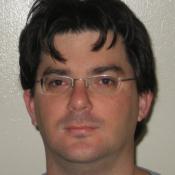Optical seminar | 05 June 2020
Online

We present a self-consistent theory of the steady-state electron distribution in metals under continuous-wave illumination which treats, for the first time, both thermal and non-thermal effects on the same footing. We show the number of non-thermal electrons (i.e., the deviation from thermal equilibrium) is very small, so that the power that ends up generating these non-thermal electrons is many orders of magnitude smaller than the amount of power that leads to regular heating.
Using this theory, we re-examine the exciting claims on the possibility to enhance chemical reactions with these non-thermal electrons. We identify a series of rather astounding errors in the temperature measurements in some of the most famous papers on the topic which led their authors to under-estimate regular heating effects. As an alternative, we show that a very simple 19th century theory, based on just simple heating, can explain the published experimental data with excellent accuracy.
Last news
-
-
Butterfly Effect: ITMO Researchers Create Colorful Perovskite Films for Optoelectronics
-
Scientific Show, Lectures, and Lab Tours: Recap of Physics Day 2025 at ITMO
-
ITMO-Developed Metasurface Makes Optical Chips 2x More Efficient
-
“Combing” Light: ITMO Researchers Find Reliable and Fast Way to Transmit Data in Space
